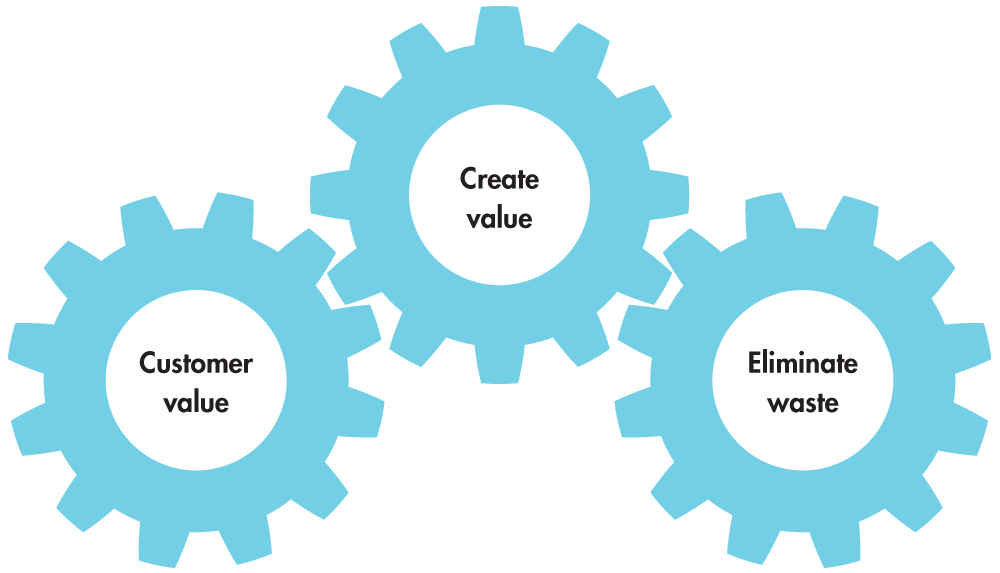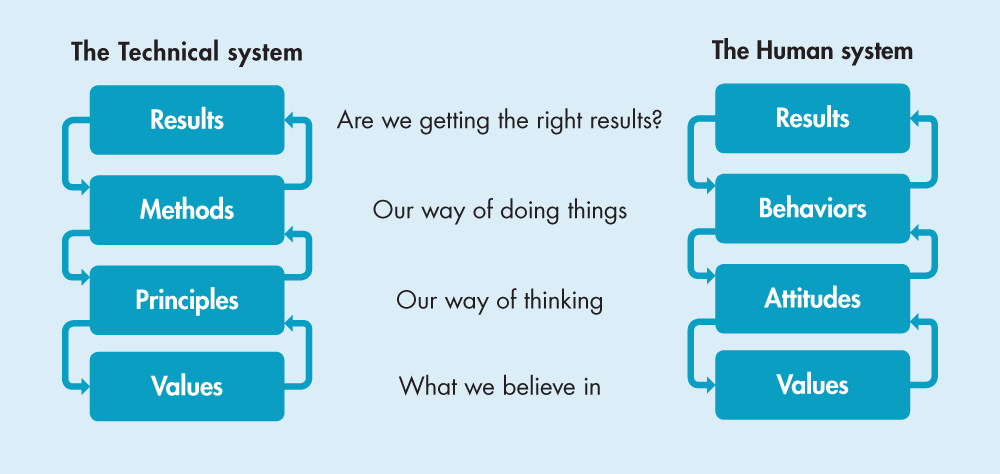Within Inission, we have established five principles that guide us how to organize our operations to strengthen our competitiveness. The principles are connected – from our understanding of what creates customer value to creating efficient flows that deliver this value.
1. Customer value

Find out the customer’s needs. Focus the work on value-creating activities. Eliminate waste.
Customer value is about understanding who our customers are and what needs they have. Based on this, we plan our work to meet our customers’ needs and deliver what creates value from their perspective. We strive to eliminate activities that do not add value for the customer.
Working according to this principle results in effects such as:
- We constantly adapt to changing needs and conditions
- We save time and resources by only working with what
generates value - Customers are satisfied because we meet their needs
2. Standardiserat arbete

Best known and agreed working methods. Starting point for all improvements. Visualize the normal mode.
A prerequisite for delivering good quality in an efficient way is to work in a standardized manner. It is not only important what we do but also how we perform our tasks. When everyone in the group performs the same work steps equally every time, we create predictability and conditions to improve our common way of working.
Working according to this principle results in effects such as:
- We get good and predictable results when everyone works according to the best known working methods
- We get a good foundation for education and training of employees
- It will be easier to find and solve issues when something has gone wrong
- A clear starting point for improvements
3. Flow

Small batch sizes and short set-up times. Interconnected process steps. Pulling production.
Flow is about how a product or matter is refined from the first to the last step in a work process. The aim is to do this as quickly as possible without risking deteriorating quality or customer satisfaction. We do this by eliminating the causes of disturbances on a daily basis and by removing waiting times and waste.
Working according to this principle results in effects such as:
- With shorter lead times, we can deliver faster to the customer
- It will be easier to plan the business and we will have increased flexibility
- We detect errors faster and can immediately stop the process
4. Quality

Quality at every level. Pay attention to disturbances and deviations. Immediate error feedback.
Our quality work is based on us doing the right thing from the start and it should be easy to do it. By paying attention to quality deficiencies at an early stage, we can keep our costs down while saving time and protecting our customer from problems.
Working according to this principle results in effects such as:
- We can more easily solve problems before they have grown big
- We create security for the employees by creating the right conditions for success
- Customers are more satisfied with safer deliveries and better products
5. Learning organization

Sets time for learning and improvements. Coaching leadership. Wants and can contribute to the improvement work.
In a learning organization, it is a natural part to not only produce, but also improve the work. The leaders in the organization develop outstanding employees and groups to want and be able to contribute to the improvement work.
Working according to this principle results in effects such as:
- We are constantly improving and simplifying our work so that we can do more with the same resources
- We develop and have fun at work
- We deliver faster and with better quality, which further improves customer satisfaction